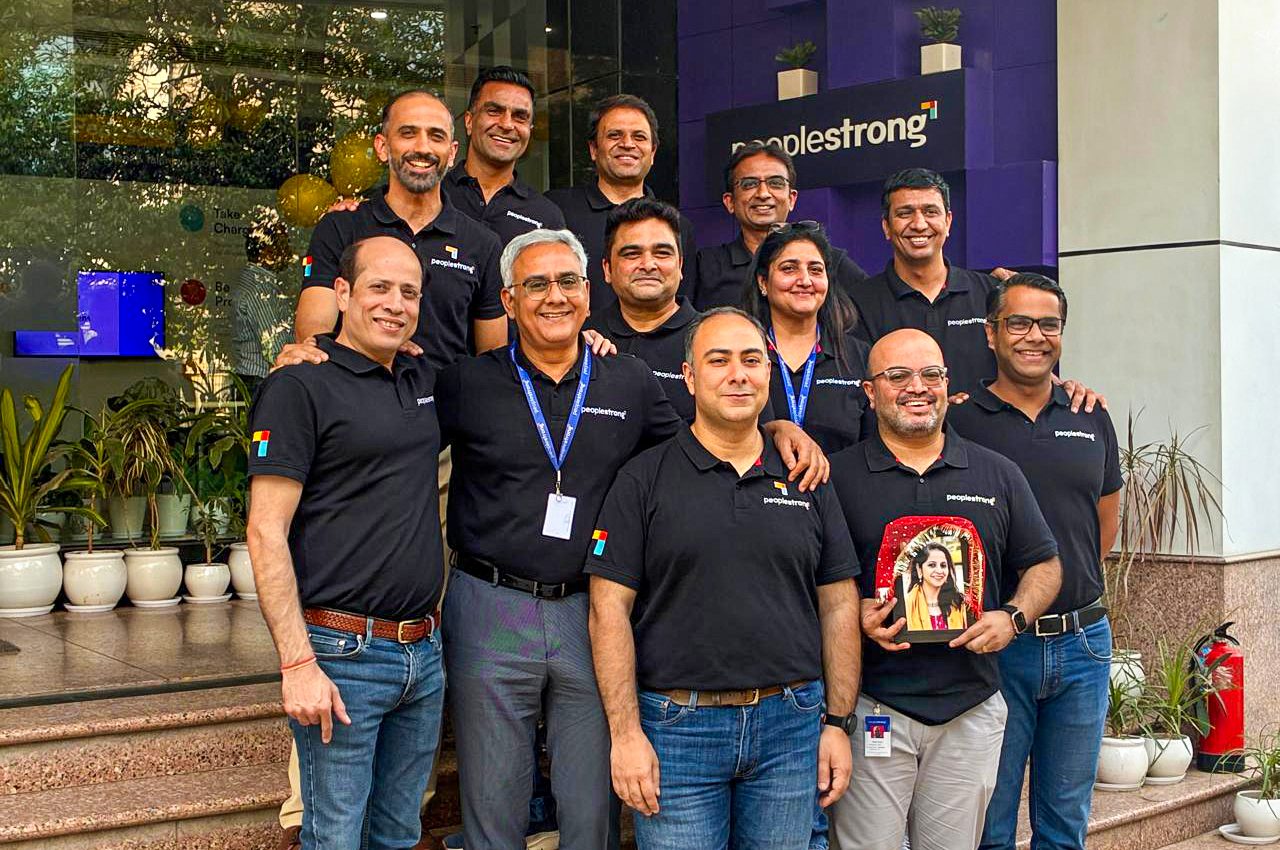About 58% of the workforce needs new skills to get their jobs done, given the waves of technological changes and talent crises lashing against the business landscape. Considering the metamorphosis organizations will have to go through to meet tomorrow’s automation needs, the best way to ensure your organization rides the wave and reaps the most benefits without losing out is by tapping into the resources you already have and helping your people realize their true potential.
People have a way of digging deeper into themselves and bringing out unconscious competence, if they have the right and nurturing environment around them. That’s why you need talent management to set a context of care, growth, and nourishment, so people find their workplaces safe, and pleasantly challenging at the same time.
This article will take you through why talent management is important across all stages of the employee lifecycle, to help you curate interventions to fix what’s not working for you right now.
Suggested Read:
The Ultimate Guide to Talent Management
What Happens Without a Proper Talent Management Strategy?
When Jack Welch took over General Electric in 1981, as the youngest chairman ever, he toured different plants, talked to heads of departments, and asked them only one question – “Who are your most talented people and what do you do with them?” Bringing in talented people is one thing. But handholding and developing them throughout their tenure with you is another thing entirely.
Without it, nothing is tying top talent to your organization. Some companies implement blanket initiatives once in a while to engage their workforce but to no avail. Without a proper talent management strategy in place, these are some of the things that could happen:
- Any employee engagement or wellbeing initiative you drive will fall flat because people perceive it to be a one-off measure that will not benefit them as much as they need to.
- A steep increase in attrition, especially folks in the middle management who are looking to explore who they are, if they are management-material and move up the ranks fast.
- A subtly visible, but strongly felt sense of discontent amongst employees, and them working as silos.
- Before any employee completes the full learning curve of their role, they move out of the organization, having the manager replace them with someone who will most likely start from scratch.
- ROI of training and development initiatives do not see the light of day.
- Some roles become redundant, and you may have to lay off employees who have stuck with you through thick and thin.
- The leaders you hire from competitors may not fit in well with your culture, or share a polished understanding of your customers across geographies, resulting in constant differences of opinion with other leaders and employees when it comes to strategy planning.
- Improper link between engagement and productivity.
- Distorted trust of employees on the management, and flight risk of employees increases.
Why is Talent Management Important at Every Stage of the Employee Lifecycle?
75% of CEOs cite that the scarcity of essential skills and capabilities is a key threat to the growth prospects of their organizations.
One common trait of high-quality management in organizations is that they recognize the importance of people management, and developing culture, systems, and processes for effective talent management. That’s why you need time-tested, proven measures at every step to get your team on your side, and truly make them feel taken care of. Let’s go over every stage in the employee lifecycle, and why talent management is crucial for employees in this phase.
Build Trust With Warm and Consistent Onboarding Practices

SHRM studies show that employees who are onboarded well are 2.6 times more likely to be highly engaged at work. Employees are forming opinions every minute, ever since they accept the offer from you. Every step, right from consistent candidate engagement, to preboarding, to an effective onboarding says a lot about your company as a whole. Regardless of whether you’re a company of 100 or 10,000, sometimes things can fall through the cracks.
A new joiner may not receive their laptop on time, be assigned a buddy promptly, or be left alone with no contact from the manager for a day or two. While this seems harmless, it has a big impact on the employee. They are left to presume that they aren’t important compared to what others on the team are doing. When this first impression sticks with them, regardless of what you do, they will always bring up the fact that they weren’t onboarded well, and find faults in every initiative you take.
Every touch point is important, and warm, constant human connection plays a significant role in how comfortable the employee’s settling-in process is.
Brandon Sammut, Chief People Officer of Zapier says, “Zapier does this best. The experience of working with the company starts well before. Every newcomer is given 2 weeks of rigorous onboarding, where working methodology, communication protocols, etc. The onboarding is ongoing for the first 6 months, so the candidate has time to acclimatize and assimilate more information about the company.”
Set Goals that Propel Employees to Unleash Their Full Skillset

By 2030, close to 1 Billion people will have to be reskilled to be able to contribute meaningfully to businesses around the world. That includes your entire workforce, irrespective of where they are on the 9-box grid. As managers set goals for their employees’ performance, and they exhibit performance, you’ll be able to see how they appease the customer (internal or external, or both), through the improvements in culture, engagement, and work-life you’ve crafted for them.
Progressive companies make a large investment in learning and skill development – monetary and people strength.
Brandon Sammut, Chief People Officer of Zapier says, “Zapier is an 800-person team, and has a 7-person learning and development team, showing how highly we prioritize it in our people function.”
Instead of focusing our skill developmental efforts on a handful of people who already show incredible potential, robust talent management efforts open up as many opportunities to those in the individual track as well, such as giving peer-to-peer coaching at all levels and bringing in external coaches for those in senior levels. This gives everyone an equal chance to explore their full potential.
Create a Culture That Improves Continuously and Organically

Employee engagement has 3.8 times as much influence on their stress levels as much as the physical workplace does. Also, job satisfaction, organizational commitment, and effective HR practices could account for a significant variation in profitability between companies.
Employee engagement goes beyond just happy hours, or playing games. It’s what you achieve by adopting a set of practices that instill hope and affinity among employees, make the nature of their jobs mentally stimulating, exude pride in being associated with the company, and improve relationships with one another.
Apart from organizing events that directly reap one or the other above-mentioned outcomes, the secret to talent management, in the long run, is to create a culture where the abovementioned happen organically. Right from regular employee engagement surveys, to 1:1 conversations and more humanitarian initiatives to hear from your people, course correct, and make their lives better.
Deutsche Bank also has a subtle way of instilling a healthy growth mindset and nurturing culture. Every employee is supposed to ask themselves ‘What did I learn today?’ and their manager also follows up on the same. They don’t have to take any particular course to answer the question every day. They can listen to a TEDx talk, read a book, or an article, and have an uplifting conversation with colleagues. Sharing even a smidge of learning keeps them sharp, and when it comes to taking up challenging tasks, they’ll be ready to take the leap.
Monitor Performance Along with Potential and Extraordinary Efforts

Performance review season is a nightmare for the HR team, and that’s not without good reason. So much effort goes into it, but is the team’s focus right? That’s the question we need to be asking.
When employees have quarterly progress checks, they are 90% more likely to be engaged, and 2.1 times as likely to feel their evaluation is fair and transparent. As employees start performing well, upon benefitting from the culture you created with a robust talent management system, you’ll see a surge in ROI from creating cost centers and splurging on their rewards and recognition management.
Performance shifts towards betterment – on time, high-quality delivery, and delighted customers – because your people are naturally inclined to give their 100% to what they take up.
Lay Out Holistic Succession Planning and Employee Development Opportunities
Brandon Sammut, Chief People Officer of Zapier says, “Being a manager isn’t for everyone. When we sit down and talk with aspiring leaders, we listen and why they want to become managers, instead of becoming higher-level individual contributors, or people managers. Before someone applies for a manager, we have a discourse on what the role entails, for them to make an informed decision.”
Studies show that most managers use traditional talent management methods for employee development and ignore the combination of the enterprise’s development strategy along with the employees’ personal career planning – which is why brain drain happens easily in these organizations.
Succession planning for critical roles secures the future of the organization by grooming the best people for new projects, and for when the organization makes an entry into a new market, etc. When done properly, the team will be able to link succession planning to market growth, financial performance, and improved corporate reputation over time.
Also, when talent can live freely at work, and has a whole team taking care of them financially, emotionally, and professionally, they expand their horizons and contemplate innovating for your company. A healthy talent management system enhances revenue opportunities identified by a culture of innovation, or specific initiatives.
Another angle to look at when you consider developing your talent is to train people in global, geographical issues, and functional issues they will face in real time when they climb higher up the ladder. Slowly introducing leadership-level projects to give them a taste of how their role will look like is the best way to holistically nurture your company’s future leaders.
Retain Employees Compassionately
Danny Kalman, author of the book ‘Make Your People Before You Make Your Products’ says, “If you give your people the chance to perform at their best, if they’re engaged in what you’re trying to achieve, and you have a workplace in which they can develop and shine, then you will have a powerful edge that no other organization can copy. Your people will be your unique source of competitive advantage.”
Retaining people is one of the hardest things an HR team does. Staying up-to-date on what competitors are doing, measuring each area of improvement in the company, bearing the brunt of unexpected resignations, and the inability to replace stellar employees are all events that undermine your constant talent management efforts. But, even during exit conversations, there’s a role talent management can play, to win them back, or have them come back to you as boomerang employees.
Nokia had a culture where they’d give memorable, positive, and fulfilling exit experiences to their employees, during which they would most likely have a change of heart, and if they didn’t, Nokia’s HR team gave them a pleasant farewell. When Nokia had to lay off 18,000 employees after the wake of smartphones, they spoke to each employee in person and helped them set up the next stage of their lives before leaving Nokia’s premises.
Be it conducting job fairs, funding for college tuition or higher courses if the employees wanted to study after being laid off, or arranging for funding for employees’ side hustle if they chose to go another way, they ensured their employees had a soft landing after being let go. This goes to show how much they valued their employees and how empathetic their talent management was, even during hard times.
The result? Even during its closing weeks, Nokia saw high-volume sales, because employees wanted to give their best to the company before leaving. That’s the power of holistic talent management.
How Can PeopleStrong Help?
Given how critical the talent management function is, you need a team of seasoned experts to help you brainstorm HR process improvement, visualize the ideal employee lifecycle you want to create for your workforce, and show you the infinite possibilities you can have with the help of technology.
We take every step of our 8-step implementation process seriously. We fall back on our decades of collective HR experience to deliberate, brainstorm, experiment, and implement the best solutions for you. Our all-encompassing, hire-to-retire solution is tailored to the T for your organization, during implementation.
Your digital transformation journey doesn’t have to be hard. 53% of HR leaders say mitigating change fatigue is a top priority. With the PeopleStrong Talent Management module and our unparalleled implementation, you only have to change once, to cater to the present and future generations of employees. We’ll make this one change smooth, cost-efficient, and quick for you.
Get in touch with our sales team to schedule a quick demo today, and implement our robust talent management module.
Frequently Asked Questions
What is the difference between talent management and human resource management?
Talent management focuses on attracting, developing, and retaining employees with high potential and critical skills to achieve long-term organizational goals. It includes strategic activities like succession planning, leadership development, and employee engagement. Human resource management (HRM), on the other hand, encompasses a broader range of administrative functions. While HRM ensures the effective management of the workforce, talent management aims to nurture and optimize employee potential, aligning it with the organization’s strategic objectives.
What is the role of technology in talent management?
Tools like Applicant Tracking Systems (ATS) improve recruitment efficiency, while Learning Management Systems (LMS) support continuous employee development. HR analytics platforms provide insights into employee performance and potential, enabling data-driven decisions for succession planning and talent retention. Additionally, collaboration tools and digital platforms foster engagement and connectivity among employees, especially in remote or hybrid work environments.
What metrics are used to measure the success of talent management?
Employee engagement scores, derived from surveys, reflect satisfaction and commitment levels. Time-to-fill and time-to-productivity metrics indicate the efficiency of hiring processes and new hire effectiveness. Performance metrics, such as goal achievement and competency development, assess the growth and contributions of employees. Additionally, diversity and inclusion metrics track the effectiveness of initiatives aimed at creating a diverse workforce.












